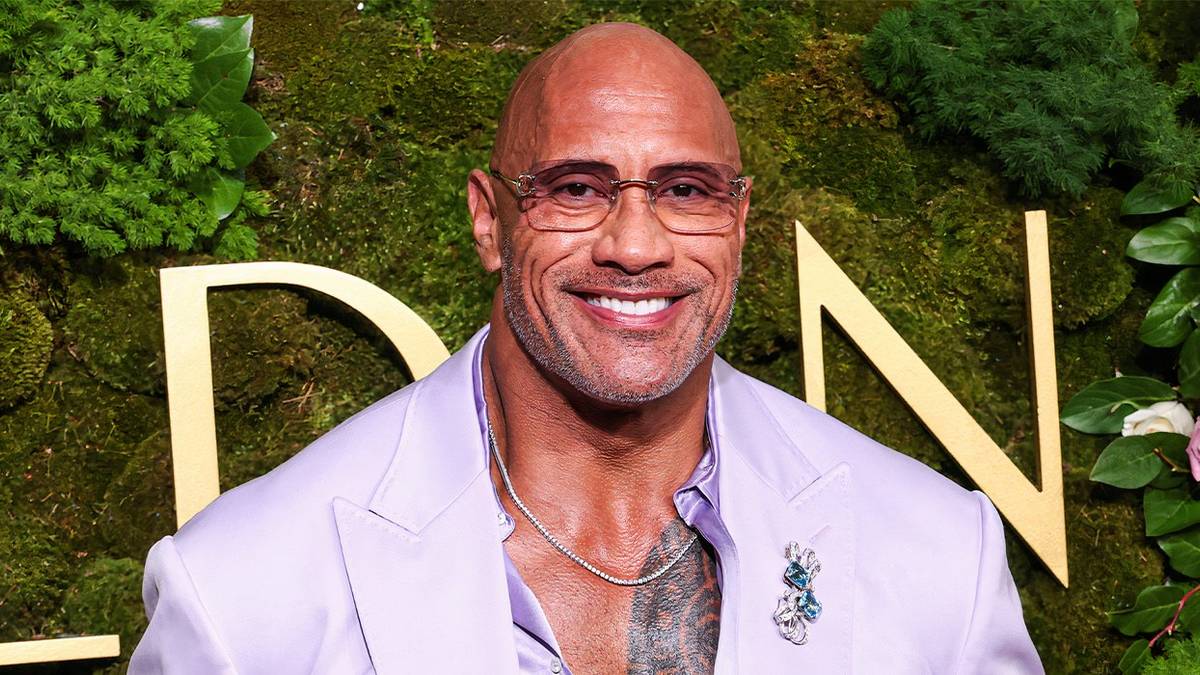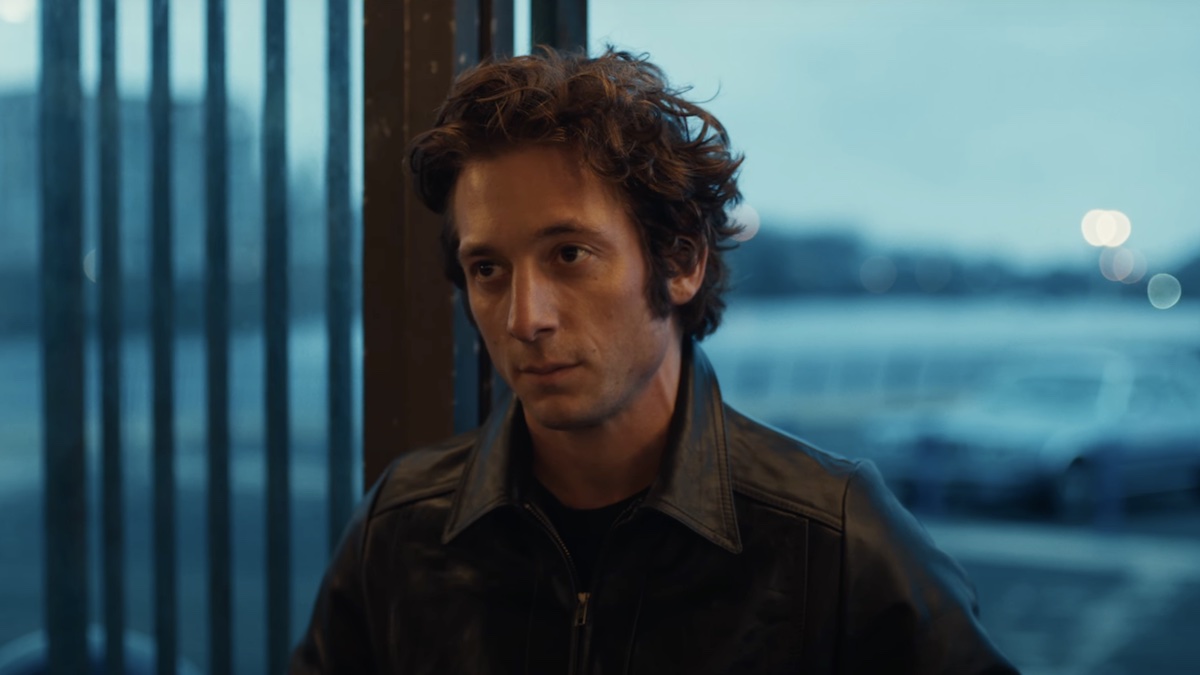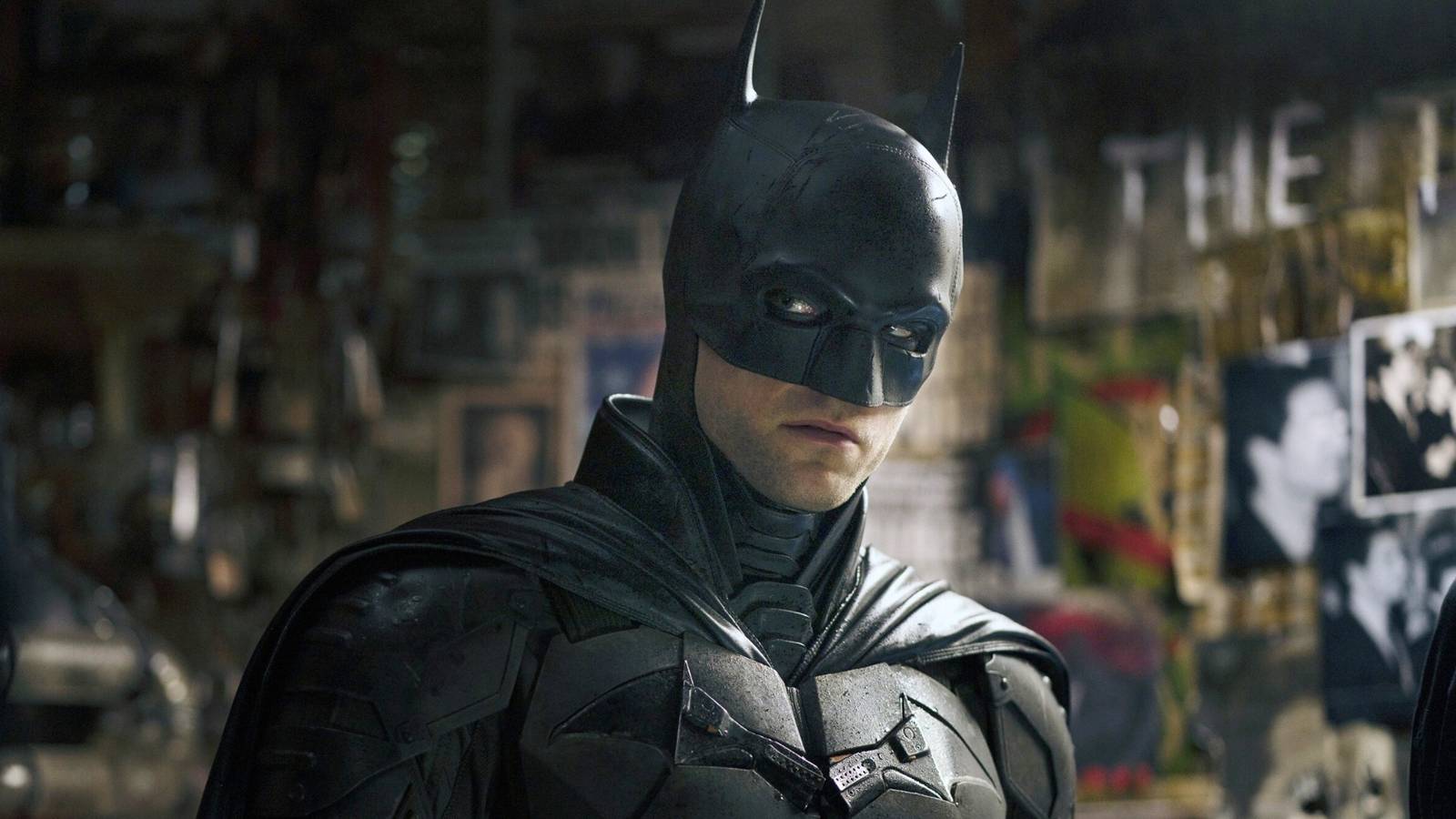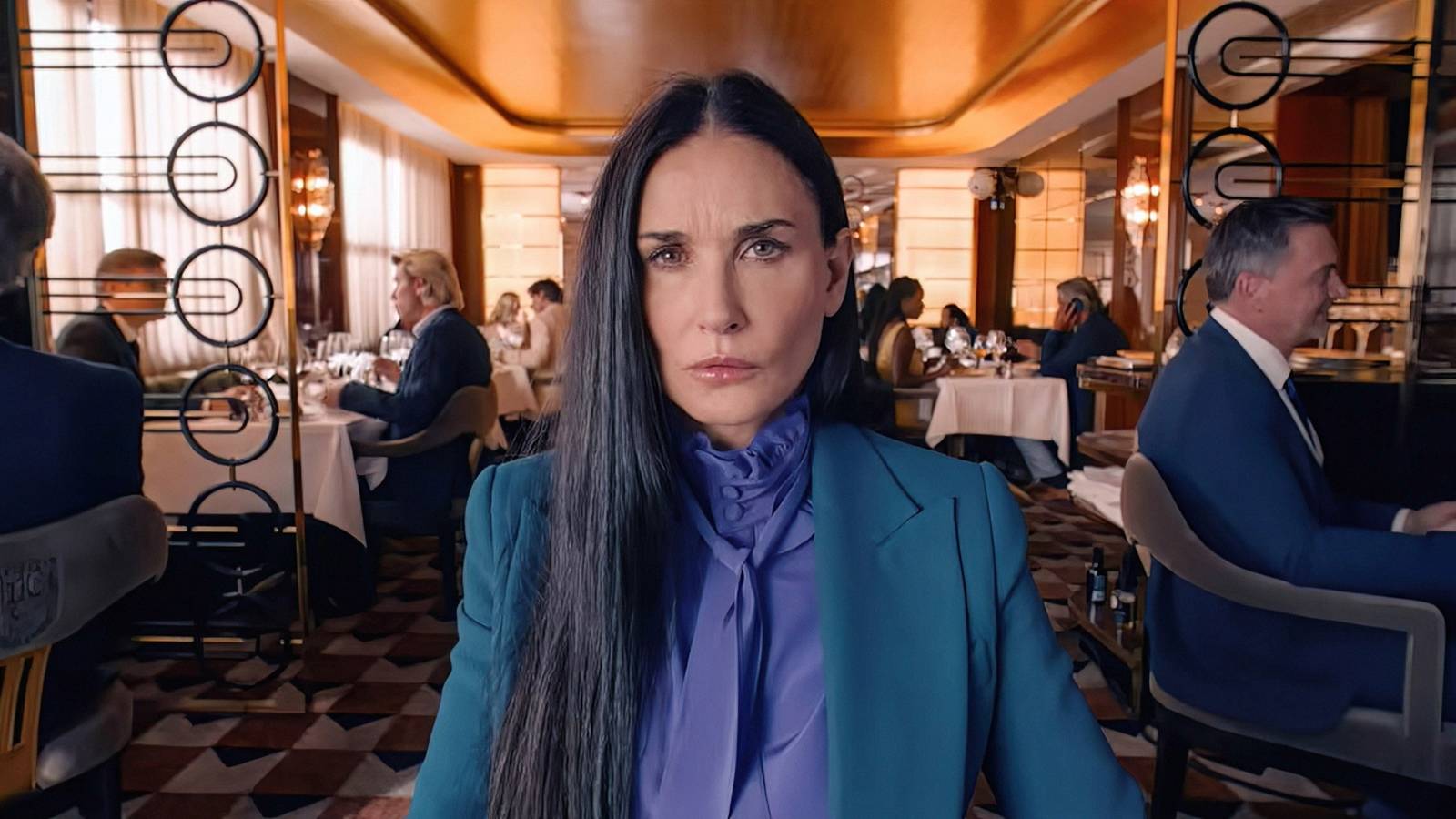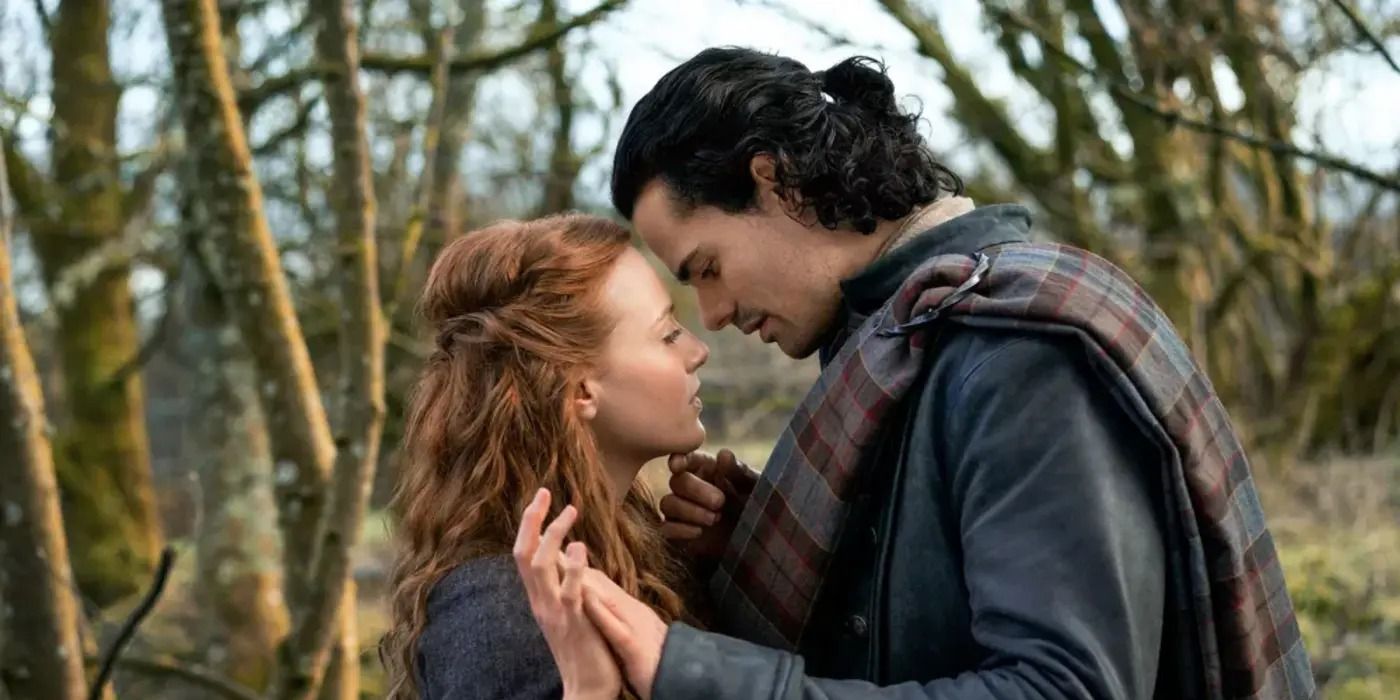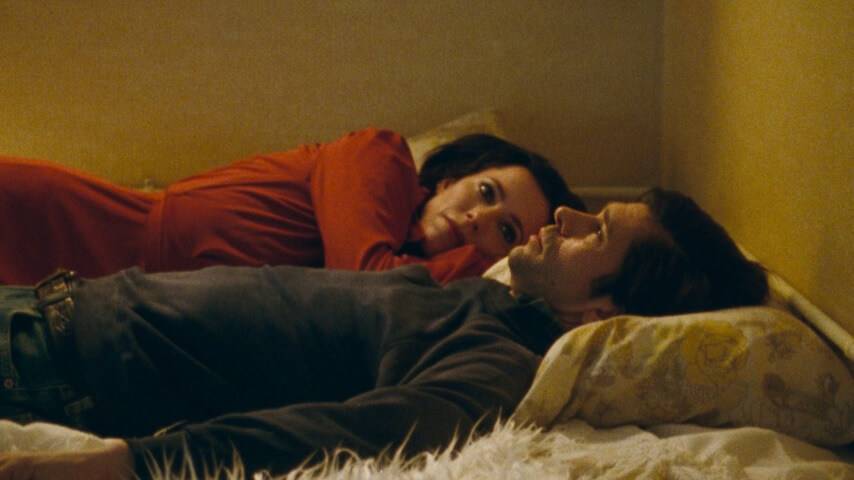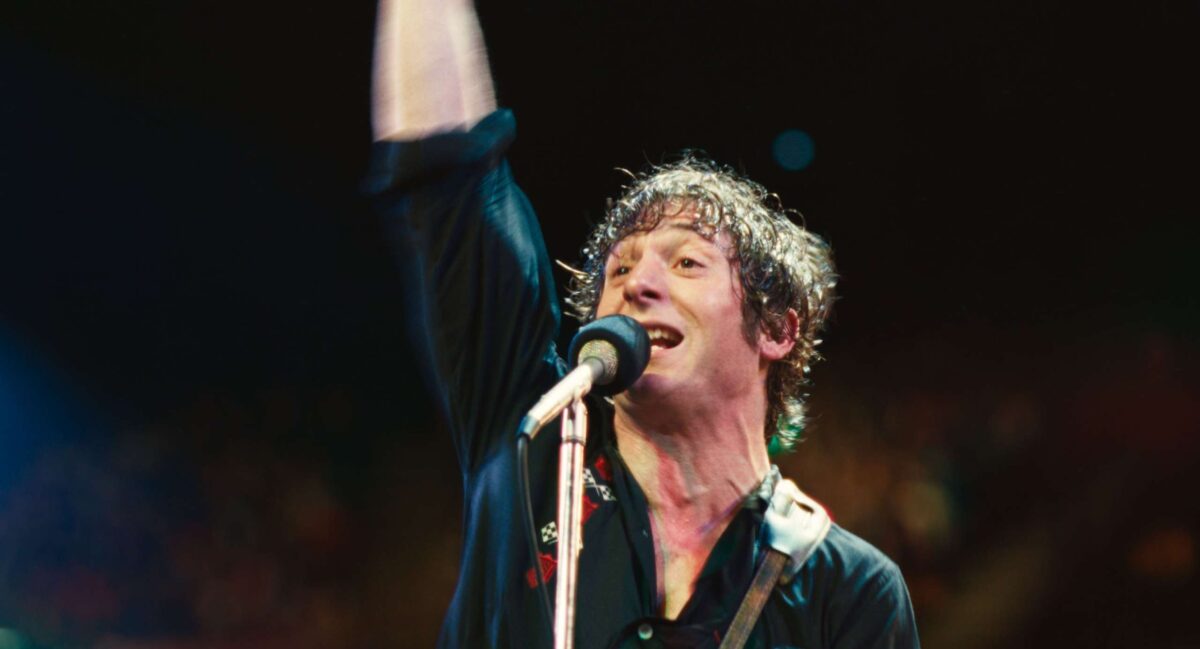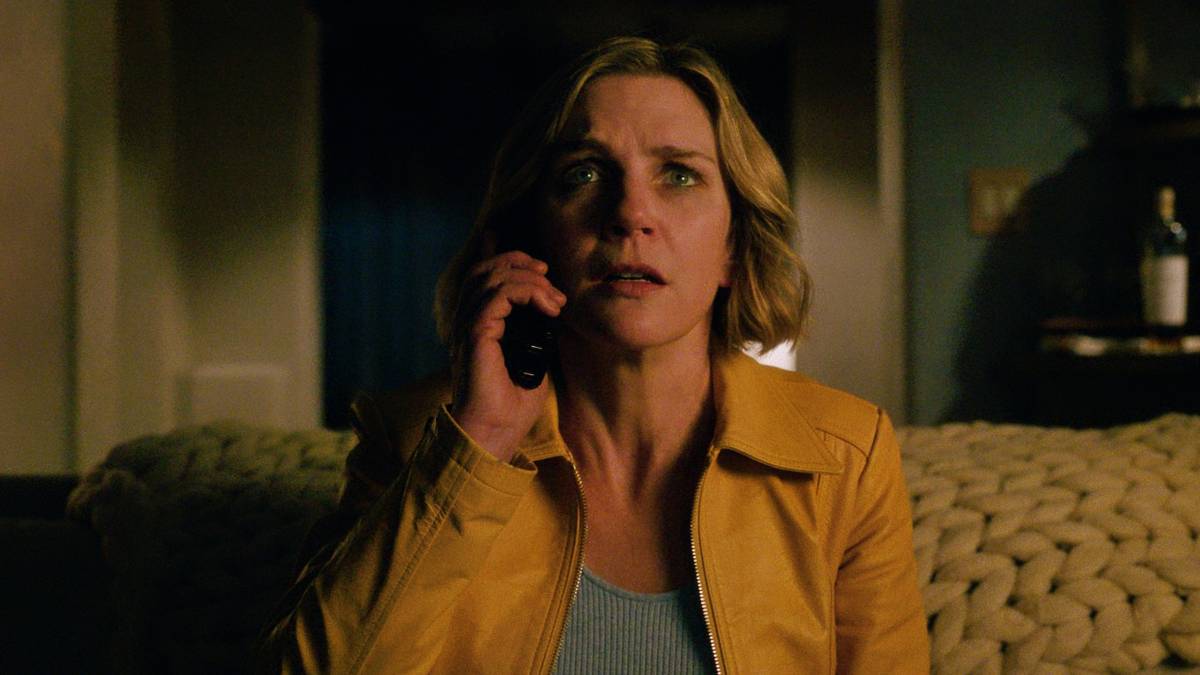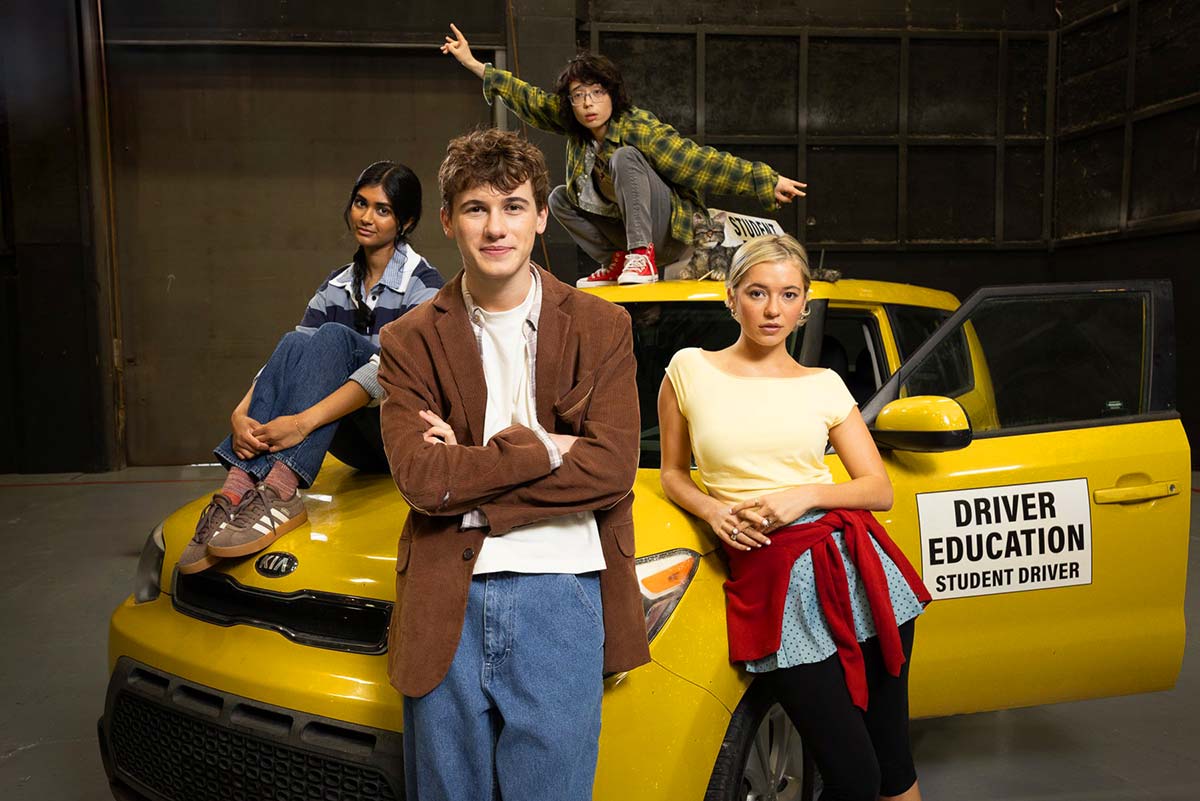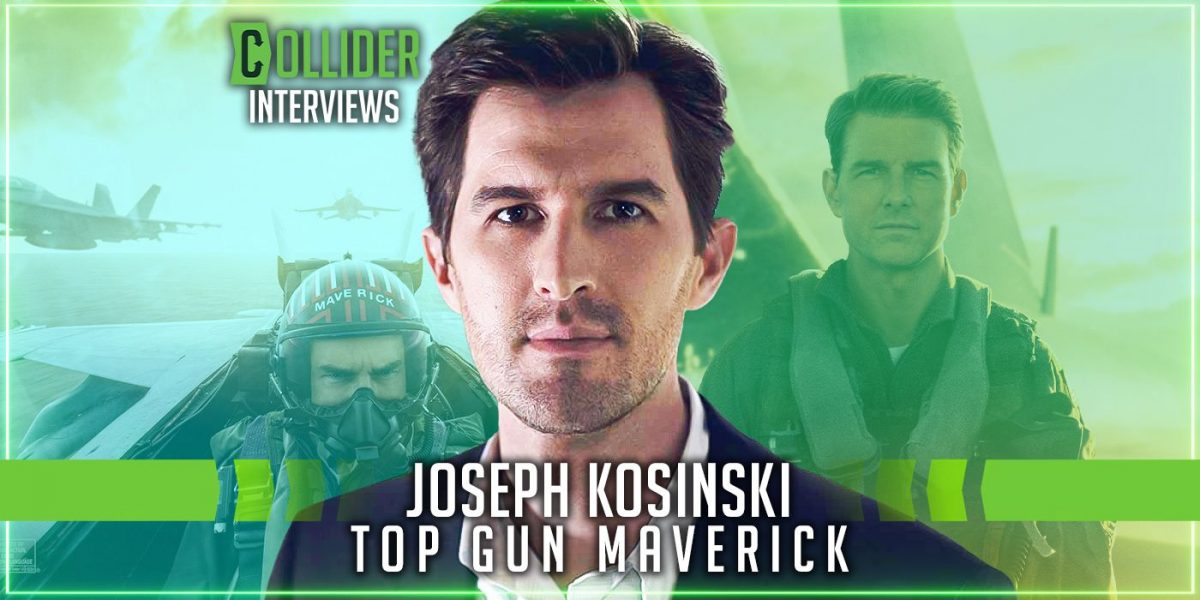
Maverick Director Joseph Kosinski on Shooting in Top-Secret Hangar
Dec 25, 2022
It’s no secret that we, here at Collider, have had the need for speed since Paramount’s Top Gun: Maverick first soared into theaters. Since director, Joseph Kosinski’s, legacy sequel topped the box-office charts and beyond, audiences have been here for the Mach speed, and recently Collider’s Editor-in-Chief, Steve Weintraub, was able to moderate an IMAX showing ahead of the film’s streaming release.
In Maverick, Tom Cruise, who first originated the role in 1986, returns as Pete “Maverick” Mitchell to train a new force of Top Gun elite pilots. Thirty years after the tragic loss of wingman and friend, Nick “Goose” Bradshaw (played by Anthony Edwards), Maverick is confronted with his past when the new graduates are required to give their all on a dangerous mission. In addition to Cruise, the sequel stars Jennifer Connelly, Miles Teller, Jon Hamm, Glen Powell, Danny Ramirez, and many more.
COLLIDER VIDEO OF THE DAY
During the Q&A, Kosinski let us in on the moment producer Jerry Bruckheimer handed over the script, and which elements the director knew he’d change. Kosinski also reveals what it was that sold Tom Cruise on the sequel after years of turning pitches down, the most challenging and bold sequences to shoot, and getting Val Kilmer’s scene perfected. He also talks about partnering with the Navy, discusses Darkstar and how they were able to shoot in a top-secret hangar, and what it’s like working with Cruise. For all this and tons more, you can read the full transcript below.
COLLIDER: How are you doing, sir?
JOSEPH KOSINSKI: Thank you. Wow. Great. I still have people showing up to see the movie. That’s good to see.
Image via Paramount Pictures
What has this actually been like for you? Because you know that most movies, they come out, make their money in the first week or two, and then they’re gone. Top Gun: Maverick is a completely different beast. It has played in theaters for forever, and it has made tons of money.
KOSINSKI: It’s amazing. We designed this film to be seen on the biggest screen possible, to be seen in a setting like this with 200 of your closest friends. That’s what I remember about seeing it in 1986 when I was 12 years old, and that’s the experience we all wanted to create. So, we couldn’t be more thrilled that we’re sitting here, whatever, five or six months later, and it’s still playing. It’s amazing.
When did you actually first realize that the film was becoming something more than a movie?
KOSINSKI: The first moment where I realized the movie might work, was at CinemaCon. Were you there?
I was.
KOSINSKI: Yes. So, that was after sitting on the movie for two years, we played it for a real audience for the first time. And I was in Las Vegas with a bunch of people who work in the business and film critics, and the reactions during the movie, you can just feel it. You could feel that the audience was into it. And so at that point, I was like, “Wow. Well, this might…” People were laughing at jokes, and you could hear some sniffles during certain scenes. And yeah, from that was the first moment where I was like, “Wow, it seems to be playing well.” But I don’t think there was a moment where I realized anything. It’s just been this constant thing for the last six months. It’s been great.
Image via Paramount Pictures
A lot of people might not realize that Paramount had been thinking about a Top Gun sequel for a very long time, and they never could convince Tom [Cruise] to do it. It was just one of those things people had talked about and talked about. How exactly did you pull Tom and convince everyone to do this?
KOSINSKI: Well, it started with Jerry Bruckheimer sending me a script that they were working on. I was finishing Only the Brave. I was at Skywalker Ranch. He sent a draft. I read it. It had two things in it that I really liked. It had the character Penny Benjamin, which I thought was really clever, and it had Maverick stealing an F-14 from an enemy base at the end, which I loved. But otherwise, I felt like I had ideas about how I thought I could improve it, the main one being the relationship between Maverick and Rooster being at the center of it.
I felt like that was the emotional hook that the film needed, and that Tom would be looking for, if you were going to even consider it. So, I pitched that along with a bunch of other ideas to Jerry Bruckheimer, and he said, “Well, you’ve got to tell Tom in person.” So I was like, “Great.” He said, “Tom’s in Paris shooting Mission. We’ve got to fly over there. We’re going to get a half hour of his time between setups, and you’re going to have to pitch this whole movie.” So, I made a poster by myself and a whole, I guess, presentation of imagery. And we went to Paris, and we got Tom for a half hour. And the first thing I pitched to him was the Rooster story. That this reconciliation between these two characters set against a mission that would take both of them across enemy lines where they’d have to come together and fight their way back as a team, just like he and Goose were.
That would be the story. And as soon as I said that, I could see the wheels in Tom’s head start to turn because he came into that room ready to say, “Thanks for coming, but I’m not doing another Top Gun sequel. Sorry guys.”
The second thing I pitched was the Darkstar sequence. I loved the idea of finding Maverick as Chuck Yeager at the opening of this film, pushing the envelope of what’s possible in aviation, what’s possible for a pilot, and proving that he’s still Maverick. He’s still the same guy, but he’s just out on the outer edge. So, I pitched the Darkstar sequence, we talked about how we would shoot it, and I said it has to all be for real. I mean, at that point I was like, “Your stuff will all have to be for real.” I didn’t think we’d be able to get all of the cast in the planes.
And then finally, I said, “We can’t call it Top Gun 2. We have to call it Top Gun: Maverick.” And Tom looked at me, and he looked at Jerry. He pulled his phone out, and he called the head of Paramount and said, “We’re making a sequel to Top Gun,” basically agreeing with me.
Image via Paramount Pictures
I love that story, and that just demonstrates who Tom is and the power he wields. So, one of the things I’m curious about, this movie has some fantastic shots in it, and you put cameras in places that they’ve never been. What do you think was the single most difficult shot in the movie to pull off? Something that you didn’t think you could actually do?
KOSINSKI: It’s hard to pick one. Can I name a couple?
Sure. Absolutely.
KOSINSKI: The one that I was dreaming about that I wasn’t sure we’d be able to get is the one of Maverick launching off the aircraft carrier. That’s all real. I don’t even know if a citizen has been able to do that before. So, that was a thrill to be able to get that shot.
As a sequence, probably the most insane thing we did was when Tom did the sequence where he flies the course in two minutes and 15 seconds and proves the mission can be done. That was flown by, well, the Navy has rules about training. And pilots are not allowed to go below 200 feet above the ground. That’s considered as low as they’re allowed to go. In certain special circumstances, they’re allowed to go down to a hundred feet if they have special training. In that sequence, Tom and his pilot were under 50 feet going down a narrow canyon that is an actual low level training course for Top Gun. And that was probably one of the most insane things we did because he’s looking over at his shadow on the mountain in certain sequences there. And that was all shot for real with a real Blue Angel pilot.
But in some ways, the hardest sequence to shoot, which you never imagined for this movie, is the sailing sequence. What you see in the movie is the third time I tried to shoot that scene. The first time I tried just off the coast of Long Beach, no wind. Second time off the coast of San Diego, no wind. And then, the third time we flew San Francisco where it’s always windy in the bay, and we finally got it. But yeah, that was frustrating because there’s nothing we could do about it.
I’m always curious about the editing process because it’s where it all comes together. Which sequence did you repeatedly go back to because you were never a hundred percent happy? Did you have one of those?
KOSINSKI: Let me think. The hardest editorially. I mean, we spent a lot of time on the bar. That first scene where you introduce all the characters, that’s a very, very complex sequence that required two shots at it to get all the pieces you see in the final cut. So, that was probably the most complex in terms of what’s happening directorially, blocking, all the stories we’re setting up. So, we spent a lot of time on that scene. The first dog fight, there were a lot of iterations of that. That got shorter and shorter and shorter and shorter.
And then obviously, the third act was, I think, Eddie [Hamilton] spent three months assembling the last 30 minutes of the film just to put it in the shape to even watch it through the first time.
Image via U.S. Navy Blue Angels
Did you end up with a lot of deleted scenes?
KOSINSKI: Not a lot, no. I mean there’s like one in the trailer you can see, which I always liked, which is Maverick when he first got to the Navy base, he pulls up in front of an F-14 that’s on a stick. They take old aircraft, and they put them on a pole out front. And we had a sequence where he pulled up on his bike and looked up, and it was his old F-14 that he flew with Goose up on a pole in front of the base. And you could see his name faded on the side of the cockpit.
So, that we pulled out. There’s a sequence in the infirmary where Cyclone is grilling Bob and Phoenix about the accident that happened, which we found out we didn’t need.
Was there ever any thought when the film was going to get re-released? Did Paramount ask you, “Hey, do you want to put any of these extra scenes in the movie?”
KOSINSKI: No. And this version of the film is the best version. There’s no reason to put that stuff back, and you don’t need it. Otherwise, it just would’ve been in there.
The Val-Tom sequence is fantastic. And I’m curious, how long did it take to find that scene? And also, you could talk a little bit about filming it.
KOSINSKI: We did a lot of versions of that scene in the script process. The first version of the scene, Iceman struggled to speak through the whole scene.
They actually had a conversation. And at some point, Chris McQuarrie had the idea to have Iceman type out his lines at first, which I was a bit wary of at first because I wasn’t sure, emotionally, it would communicate what it needed to. But the benefit of that is that when Iceman does speak, it carries more power and more weight to what he’s saying. And ultimately, it’s down to the performance of both of them, and what Val’s able to do in that scene without speaking is pretty phenomenal. And that’s a case of two actors who were masters of the craft working together and doing something to take the script to a whole other level. So, that was, for me, one of the most memorable days on set doing that, and that was quite the fewest amount of takes I did for any scene. I mean, it really came together very, very quickly.
Image via Paramount Pictures
The first movie did very well for the Navy. A lot of people signed up. It was a very big deal. So, when you approached the Navy and said, “Hey, we’re thinking about a Top Gun sequel,” what was their reaction? And did they say, “Here’s everything?”
KOSINSKI: Yeah. Well, on the first movie, I think they struggled a little bit to get that participation. On this one, yes, the people that are in power at the Navy, the admirals and people of that level, a lot of them joined the Navy because of Top Gun. So, yes, once we described the movie we wanted to make and how we were going to make it, how we wanted to make it, they were very, very helpful and instrumental and invaluable. I mean, the whole third act sequence, actually the whole movie, the structure of the movie, the whole mission that they go on, all came from a conversation we had with them about what is the most difficult, gnarliest, scariest mission you could ever imagine being put on as an aviator?
And that is it. The one thing they added, which I didn’t put in the film, was they said, “And you do it at night,” which would’ve been all with night vision goggles, which I like not to do. I said, “We’ll do it at dawn. It’ll look much better.” But yeah, without the Navy helping us not only in the script and providing us with all the fun toys, every sequence that you see in there is flown by a Naval aviator or real Top Gun pilots are flying the jets. So, what you’re seeing is real Naval aviation, which is pretty amazing.
Is there anything in the movie regarding the plane or a location that you really had to fight for to be able to use?
KOSINSKI: Definitely. The Darkstar sequence, that hangar. I went to China Lake Naval Air Station, which is a Navy base out in the desert. I’m sure you drive near it when you drive up to Mammoth. It’s off to the right, and it encompasses a huge amount of desert out there. But I was doing a tour of the base looking for a hangar for the Darkstar sequence. And they said, “You can take pictures as long as you don’t point your camera over there.” I look over there, and there’s this really interesting looking hangar with a tower and barbed wire around it and a blue door. And I’m like, “What is that?” And they’re like, “Oh, don’t even think about it. You’re never going to be able to shoot over there. Don’t take a picture of it. Don’t even look at it.” I’m like, “Well can we drive by it if I don’t take a picture?” And they’re like, “Okay, fine. We can drive by, but you can’t take a picture.”
So we go, and we drive by it, and I look at it, and it’s just perfect. I mean, it looks like a top secret hangar inside a top secret base. And I’m like, “We have this sequence where we’ve got this secret airplane that they pull out at night, and it just looks like that’s the perfect spot for it.” And they said, “Well it’s no surprise that you’re interested in that particular building.” So, I’m like, “Oh man, wow. It’d be great to shoot there. That’s too bad.” So, a couple days later, I get a call. And they’re like, “Okay, if you tell us when you want to shoot there, we’ll take what’s in there, and we’ll move it out a few days before so you’ll have a building.” And we ended up getting to shoot at the top secret hangar, and we really built Darkstar, and we put it in a hangar.
And when we pulled it out for the shoot, I was told that certain satellites owned by other countries actually moved in space to take pictures of it. I guess they were able to track that, which I thought was just amazing. If they were able to zoom in very close, they’d see Tom Cruise is in the cockpit, which is pretty cool.
That’s so funny to think that another government around on our planet possibly changed the military strategy because of Top Gun: Maverick.
KOSINSKI: Well, someone might have gotten a picture on their desk of a certain airplane and thought, “What is that?” So, that is pretty cool.
So, what is it like actually trying to direct actors when they’re in a plane, and when you can’t be in the plane with them?
KOSINSKI: I think it’s directing a play. We did a lot of rehearsal, a lot of briefs. We practiced, we built this wooden thing called the Buck, which was essentially an F-18 cockpit built out of plywood because we could do it quickly. And before they would fly up, I would put the Naval aviator and the actor in the backseat, and we would rehearse the entire day’s work. And it had a little switch to turn the cameras on and a stick and everything. So, I could sit right next to them, and we could go through all the day’s work. But while they were up there, they had to make sure the sun was in the right position, they had to make sure the terrain was correct altitude, they had to make sure their eyelines were correct to look at other airplanes. They had other lines, they had to do their own makeup, make sure their visor was down, tap their helmet for sound, and run the cameras.
So, what they did up there was amazing. But yeah, it was rehearsed and rehearsed and rehearsed, and not until they got back when we took the chips out of the camera, put it in the monitor did we see what they did.
It’s crazy. Tom Cruise is what we call a professional. He always does whatever it takes to make the movie as awesome as it can be. What is it actually like directing him?
KOSINSKI: It’s incredible. It’s a collaboration. This is my second movie with him, so I knew that going in. But Tom has worked with literally every one of my cinematic heroes as directors. So, for me, it’s the closest I’ll ever get to getting tidbits from Stanley Kubrick or Michael Mann. So, it is an incredible experience. He loves that collaboration. He could direct if he wanted to. He knows how to do everyone’s job on set. But he loves that back and forth, that creative push and pull between the director and the actor. And I think that’s why his movies are great because every day he comes in pushing everyone, including himself, to deliver the absolute best story that he can.
Image via Universal Pictures
Okay, so say you’re looking for something that he’s not doing on a take. Is it one of these relationships where you’re just giving him a few words, you just giving him with a look, or is it one of these things where you’re having a full on conversation?
KOSINSKI: Yeah, it’s very straightforward. You just tell him what the idea is, and Tom’s willing to try almost anything. He knows enough about movie making that you never really know until you get in the edit room what exactly you need. So, listen, his instincts are incredible. He’s always right there in the zone, and it’s just a matter of playing with variations and making sure that all the actors in the scene are listening, and you’re not leaving any stone unturned.
I’m going to take a step into a different direction. You’re still working on a racing movie next.
KOSINSKI: Yeah.
So, for people that don’t realize, you’re doing a pretty big project for your next one. And I’m just curious, what did you learn on this in the way that you shot the jets and where you placed the cameras that you want to take with you on your next project? And for people that don’t realize, maybe you want to tell them something about it.
KOSINSKI: Well, I just don’t think there’s any replacement for getting something for real in camera. It’s not just how it looks. The performance that you get out of an actor when they’re in a real situation, you just can’t duplicate that on a stage. So, yeah. So, for this next film that I’m working on, which takes place in the world of modern Formula One racing, the challenge is to capture that experience while it’s happening.
But rather than being on a giant jet airplane, now we’re on these very, very lightweight carbon fiber race cars where 12 or 15 pounds of camera actually would change the performance of the car significantly if you attach cameras to it. So, for us, it’s a challenge of figuring out how to capture the same things we were able to do on Top Gun to do it on a very different machine. And then obviously, what I’d like to do is push it further and start to figure out how I can operate a camera on something that’s moving that quickly. So, there’s a lot. Claudio [Miranda] and I, we’re always taking on a new challenge with every project, and this one’s going to be very tricky.
And for people that don’t realize, because you didn’t mention it, it might star Brad Pitt.
KOSINSKI We’re hoping.
So, talk a little bit about the VFX challenges on Maverick. Because you did so much practically, what were some of the VFX things, the issues, that you ran into in making it all come together?
KOSINSKI: Well, the big challenge is that a lot of the airplanes that you see in the film either don’t fly anymore, we don’t have access to, or they don’t exist officially. So, how do you shoot an airplane, the F-14, how do you shoot an airplane that doesn’t fly anymore? The F-14 was decommissioned 15 years ago, and the US government actually crushed them all, shredded them, because they didn’t want any full size fighter jets sitting on a desert somewhere where maybe they could get taken. So, we always shot everything practically, but we did a lot of very clever, it’s almost like motion capture, but you’re using an F-18 as the motion capture device. So, we always shot real jets in real locations, but we would digitally skin them with other aircraft when needed. So, when it’s done right, you should never know the difference. But every time you see an F-14 flying this film, it started its life is an F-18, which is a very different aircraft.
That’s actually great. I didn’t know any of that, and I’m just thinking about this lamp that keeps on going on and off. You know what I mean? When you look back on this project, do you think this is the most challenging one of your career? You’ve done some pretty crazy stuff already.
KOSINSKI: Yeah, I would say in terms of scale and what we were trying to capture, it was the most complex and challenging, not to mention having to hold it for two years once it was finished. That was a very weird experience. But I love my job, so it was always fun. And I’ll never forget standing out in the middle of a restricted range and having these things fly over my head, 10 feet above my head, at mach 0.96. It’s something I’ll never forget. And yeah, I think what you see on the screen is every single person on the crew giving their absolute all to deliver the absolute best film we could. And I’m just so appreciative that you all came out to see it on the big screen because that’s what we designed it for.
People that don’t remember, the film was done for, as you said, for two years, and there was a lot of talk. What’s going to happen to Maverick? Is it going to make any money? Was it worth holding for theater? Should it have been sold to streaming? And everyone’s just, of course, shut up about that.
KOSINSKI: Yeah, we made it for the big screen. And Jerry and Tom fought hard to make sure that it would only be seen that way. So, thank God they did. And here we are.
Top Gun: Maverick is available to purchase on 4K UltraHD, Blu-ray, and DVD, and is now streaming exclusively on Paramount+. For more on Top Gun: Maverick, here’s our extended interview with Joseph Kosinski from before the movie was released in theaters.
Publisher: Source link
Ira Sachs’ Drama Is A Portrait Of Rare Intimacy & One Of The Year’s Best Acted Films
"I often have the feeling that in my day, nothing much happens... and I've wasted it." So muses photographer Peter Hujar (Ben Whishaw) midway through his recorded conversation with his friend, the writer Linda Rosenkrantz (Rebecca Hall). Linda has solicited…
Nov 13, 2025
Finding the Ghost in the Machine
Scott Cooper’s Springsteen: Deliver Me From Nowhere is a somber, deeply human biographical musical drama that refuses to play by the usual rhythms of the rockstar movie. Rather than glorifying fame or recreating Bruce Springsteen’s greatest hits, the film immerses…
Nov 13, 2025
Rhea Seehorn Is the Most Miserable Person on Earth in a Brilliant Sci-Fi Two-Parter
Editor's note: The below recap contains spoilers for Pluribus Episodes 1 & 2. It's almost impossible to write about Vince Gilligan's new Apple TV show, Pluribus, without wandering into territory that critics have been shooed away from — and with…
Nov 11, 2025
Bobby Farrelly’s Feature-Length Sit-Com Is Old-Fashioned But Wins You Over [TIFF]
The Farrelly Brothers, Peter and Bobby, were comedy royalty in Hollywood after hits “Dumb And Dumber” and “There’s Something About Mary”, among others. Much like the Coens and the Safdies, they recently split up to chart their individual careers. Peter…
Nov 11, 2025

